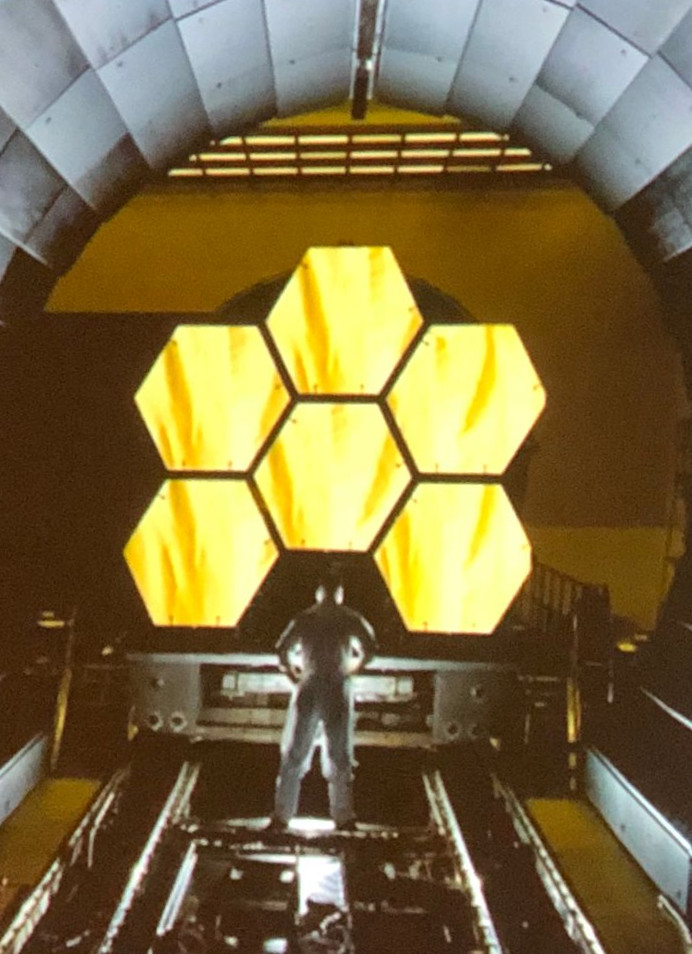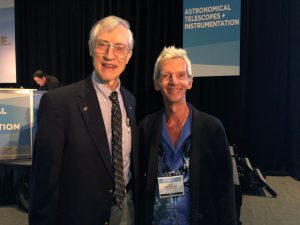
Mather, who cautioned that “Earth-like planets are unlikely to be common,” was speaking today at an international conference on telescopes and instrumentation, being held at the Convention Centre in Austin.
While other telescopes are planned for the more distant future (which I will report on tomorrow), the most immediate attention is directed to the successor of the Hubble Space Telescope. Due for launch next year, the James Webb Space Telescope will probe the depths of space in infrared light, whereas Hubble primarily measured visible light. “Hubble was 28 years old this April,” said Mather, and even though it is still operational, it is well past time for a larger and more capable telescope to be placed in Earth orbit. An analogy was developed for JWST that “it can sense a bumblebee at the distance of the Moon. It detectors are miraculously good,” he reported with evident delight.

Also speaking on the second day of the conference was Lee Feinberg who, like Mather, is at the Goddard Space Flight Center. Mather is senior project scientist for JWST, and Feinberg for the past 15 years has been managing its optical telescope element. He spoke about development of the segmented mirrors for JWST, which combined cover 25 square meters.
He explained that Ball Aerospace had already built the Spitzer Space Telescope, launched in 2003, which studied the sky in infrared. They built a subscale beryllium mirror demonstrator that led to the Advanced Mirror System Demonstrator of the JWST. It was managed by NASA and two other government agencies. “Eight mirrors were considered, and three were built and tested,” said Feinberg. The one selected for JWST is made of beryllium, mined in Utah.
Even though the large mirrors get all the attention, Feinberg said “the .74-meter secondary mirror was the hardest to make because it is convex and must operate at 50 degrees Kelvin (-370F). The hardest engineering problem we had on Webb was cryogenic testing. We used the same chamber that was used to test the lunar lander at the Johnson Space Center in Houston.”
This was last year, and they unluckily picked the very time Hurricane Harvey began to bear down on Houston. “Just as we hit cryostable temperature we heard about a tropical storm that was brewing. There were 120 people on the team, and fortunately 3 or 4 of them had big pickup trucks. Every 12 hours we would shuttle people to and from work through the flooded streets. We got though it without any risk to the flight hardware,” Feinberg said as he thanked those in the audience who helped.
The world will be watching with hope and anticipation next year as JWST is launched. “Basically every astronomer in the world is going to use this telescope,” said Mather.
Lead photo: An image Mather described as iconic, shown during his presentation, of some of the JWST mirrors being readied for testing.
Second Photo: Dr. Mather (left) with Dr. Cunningham
The conference is being held by SPIE. Visit their website: www.spie.org